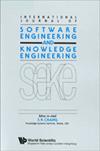A Dynamic Drilling Sampling Method and Evaluation Model for Big Streaming Data
IF 0.6
4区 计算机科学
Q4 COMPUTER SCIENCE, ARTIFICIAL INTELLIGENCE
International Journal of Software Engineering and Knowledge Engineering
Pub Date : 2023-10-18
DOI:10.1142/s0218194023410036
引用次数: 0
Abstract
The big data sampling method for real-time and high-speed streaming data is prone to lose the value and information of a large amount of discrete data, and it is not easy to make an efficient and accurate evaluation of the value characteristics of streaming data. The SDSLA sampling method based on mineral drilling exploration can evaluate the valuable information of streaming data containing many discrete data in real-time, but when the range of discrete data is irregular, it has low sampling accuracy for discrete data. Based on the SDSLA algorithm, we propose a dynamic drilling sampling method SDDS, which takes well as the analysis unit, dynamically changes the size and position of the well, and accurately locates the position and range of discrete data. A new model SDVEM is further proposed for data valuation, which evaluates the sample set from discrete, centralized, and overall dimensions. Experiments show that compared with the SDSLA algorithm, the sample sampled by the SDDS algorithm has higher evaluation accuracy, and the probability distribution of the sample is closer to the original streaming data, with the AOCV indicator being nearly 10% higher. In addition, the SDDS algorithm can achieve over 90% accuracy, recall, and F1 score for training and testing neural networks with small sampling rates, all of which are higher than the SDSLA algorithm. In summary, the SDDS algorithm not only accurately evaluates the value characteristics of streaming data but also facilitates the training of neural network models, which has important research significance in big data estimation.大流数据动态钻井采样方法及评价模型
实时、高速流数据的大数据采样方法容易丢失大量离散数据的价值和信息,不易对流数据的价值特征进行高效、准确的评价。基于矿产钻探勘探的SDSLA采样方法可以实时评价包含许多离散数据的流数据的有价值信息,但当离散数据范围不规则时,对离散数据的采样精度较低。基于SDSLA算法,提出了一种动态钻井采样方法SDDS,该方法以井为分析单元,动态改变井的尺寸和位置,准确定位离散数据的位置和范围。进一步提出了一种新的数据评估模型SDVEM,该模型从离散、集中和整体三个维度对样本集进行评估。实验表明,与SDSLA算法相比,SDDS算法采样的样本具有更高的评估精度,样本的概率分布更接近原始流数据,AOCV指标提高了近10%。此外,对于小采样率的神经网络训练和测试,SDDS算法的准确率、召回率和F1分数均高于SDSLA算法。综上所述,SDDS算法不仅能准确地评估流数据的值特征,而且便于神经网络模型的训练,在大数据估计中具有重要的研究意义。
本文章由计算机程序翻译,如有差异,请以英文原文为准。
求助全文
约1分钟内获得全文
求助全文
来源期刊
CiteScore
1.90
自引率
11.10%
发文量
71
审稿时长
16 months
期刊介绍:
The International Journal of Software Engineering and Knowledge Engineering is intended to serve as a forum for researchers, practitioners, and developers to exchange ideas and results for the advancement of software engineering and knowledge engineering. Three types of papers will be published:
Research papers reporting original research results
Technology trend surveys reviewing an area of research in software engineering and knowledge engineering
Survey articles surveying a broad area in software engineering and knowledge engineering
In addition, tool reviews (no more than three manuscript pages) and book reviews (no more than two manuscript pages) are also welcome.
A central theme of this journal is the interplay between software engineering and knowledge engineering: how knowledge engineering methods can be applied to software engineering, and vice versa. The journal publishes papers in the areas of software engineering methods and practices, object-oriented systems, rapid prototyping, software reuse, cleanroom software engineering, stepwise refinement/enhancement, formal methods of specification, ambiguity in software development, impact of CASE on software development life cycle, knowledge engineering methods and practices, logic programming, expert systems, knowledge-based systems, distributed knowledge-based systems, deductive database systems, knowledge representations, knowledge-based systems in language translation & processing, software and knowledge-ware maintenance, reverse engineering in software design, and applications in various domains of interest.

 求助内容:
求助内容: 应助结果提醒方式:
应助结果提醒方式:


